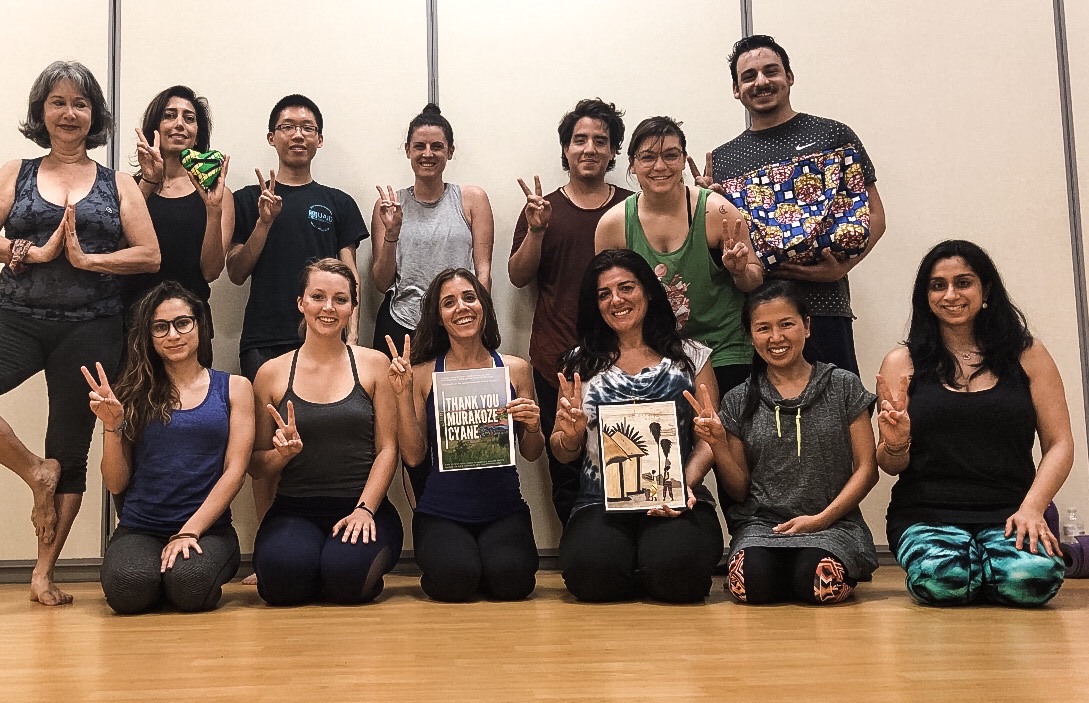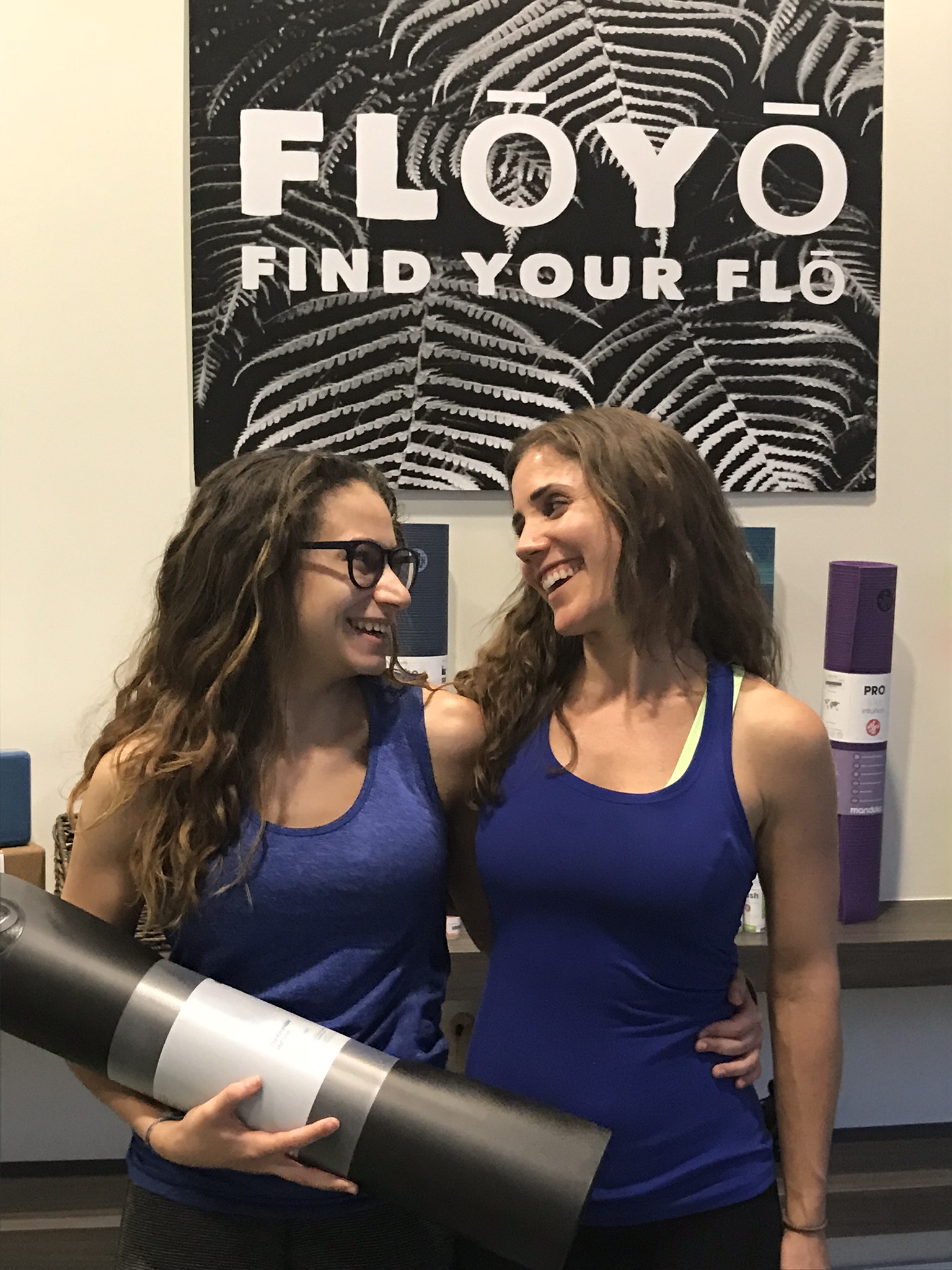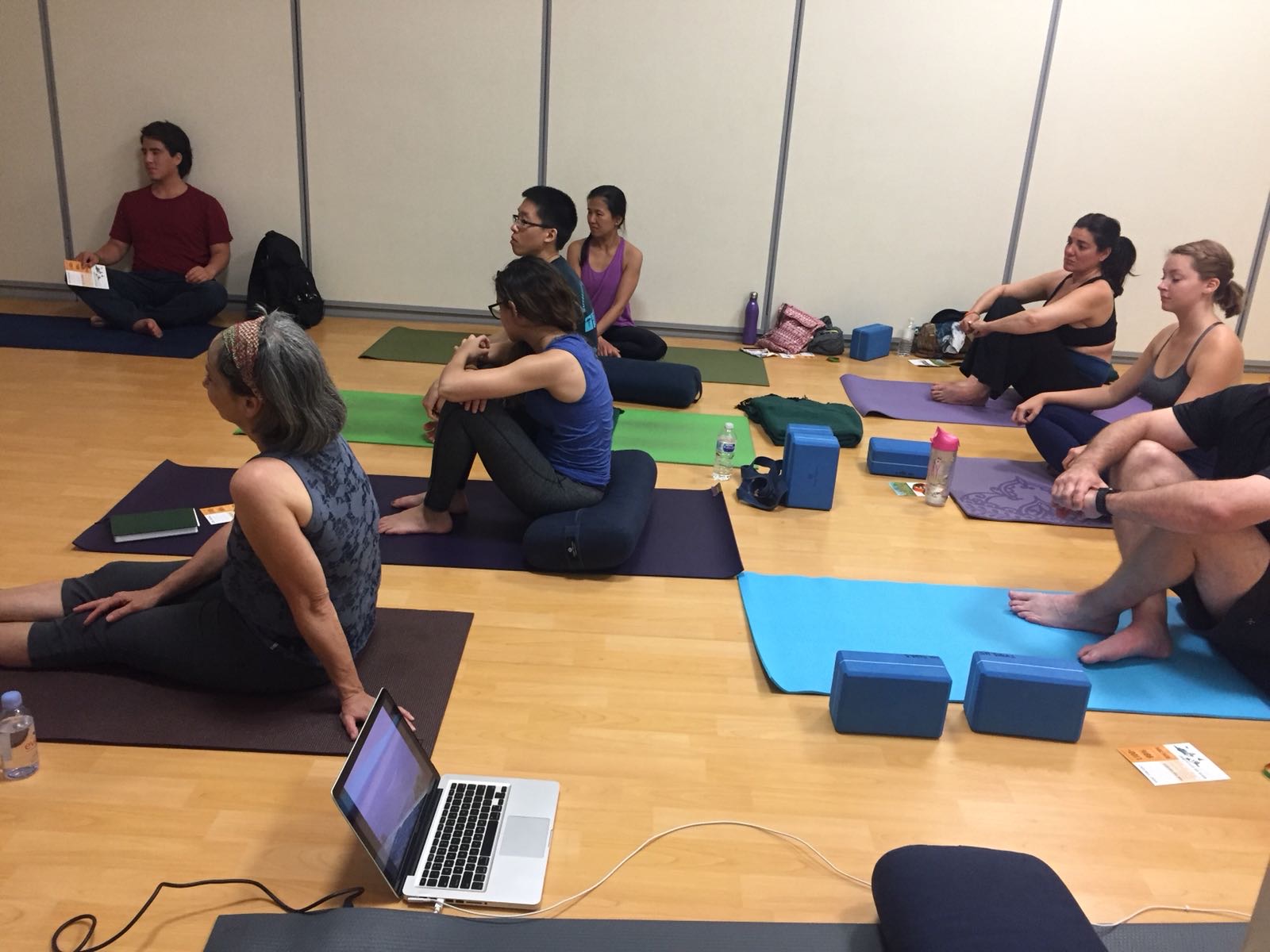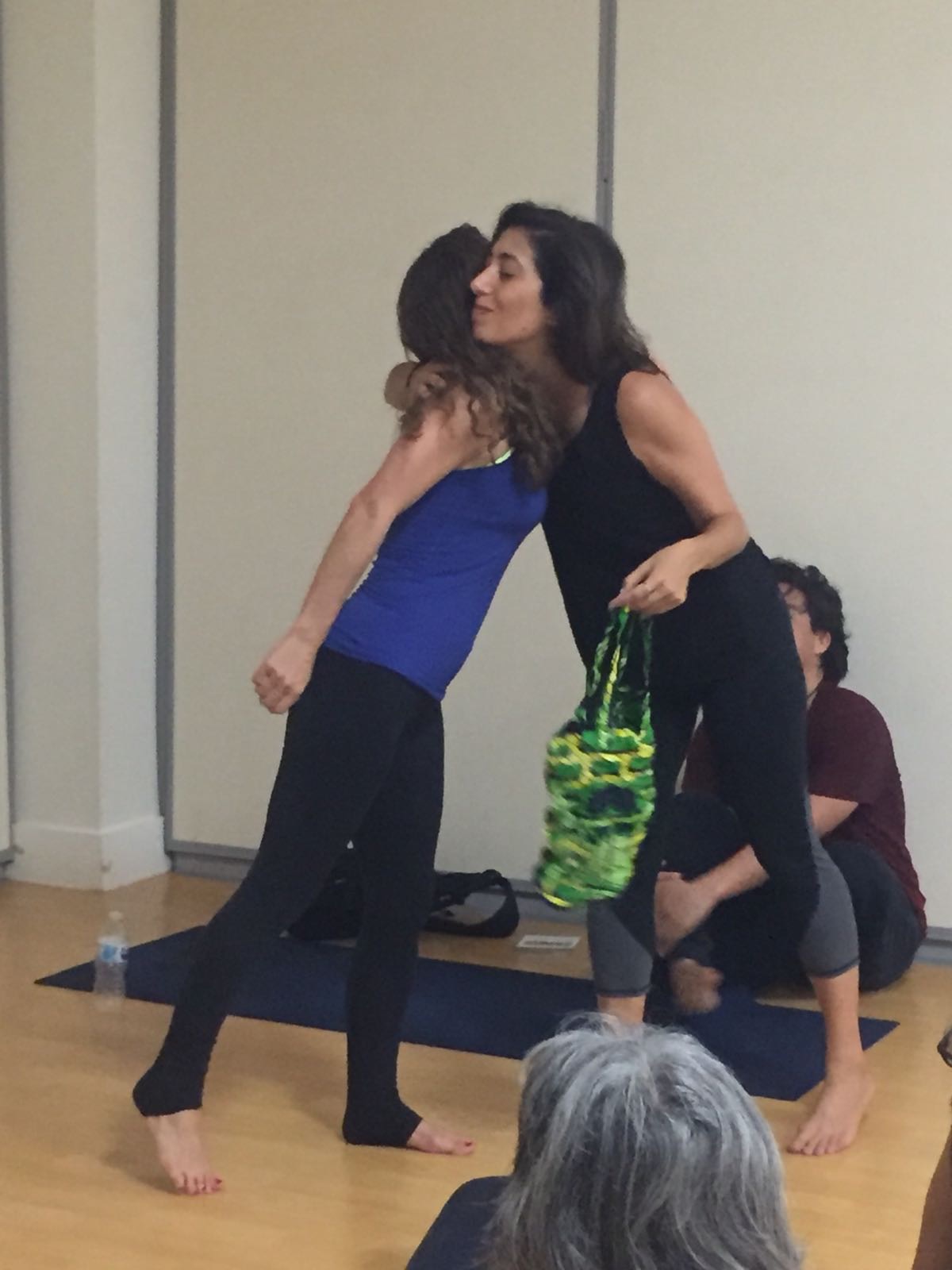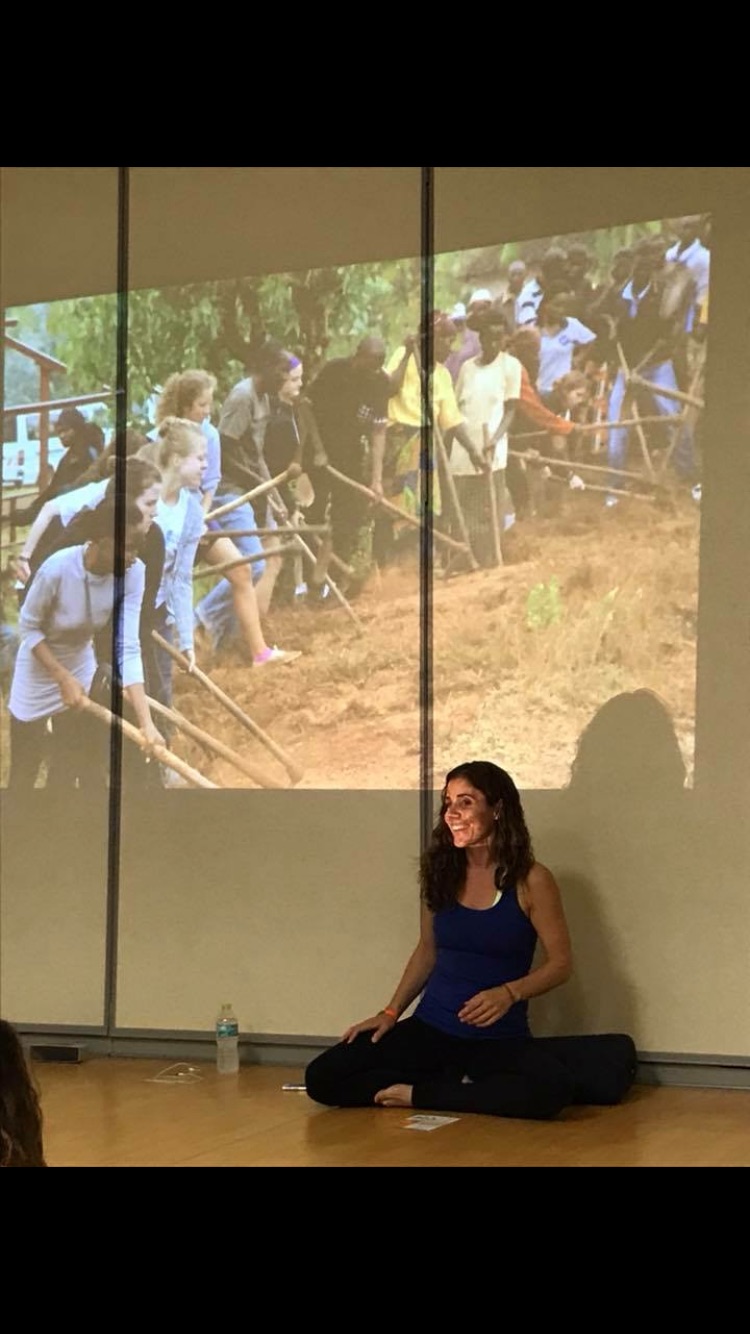Never give up! Accept meditation as part of your life, just as you eat, sleep, and to other things; make it a prominent goal to have a calm mind, to have a one-pointed mind, to have a tranquil mind. Do not give that up. - Swami Rama
"I have the most active mind. I just can't sit still." How many times have you said this to yourself when thinking about meditation? I often hear this as a yoga teacher and unfortunately these self-limiting beliefs prevent people from practicing this amazing tool. But meditation doesn’t have to be scary or overwhelming. It is meant to improve the quality of your life, not detract from it.
So, what is meditation exactly? To meditate means to systematically anchor the mind to an object. It is not relaxation, but a method that helps you bring clarity to the decisions that you’ll have to make in your day-to-day life. In a world where your mind is in sensory overload and where we now have streets signs that read "no texting and driving," this may be the most important tool to use in your daily routine.
Studies have shown that meditation provides numerous benefits to your health as well. In an article published by Psychology Today, Dr. Manning describes how your brain changes in the way you respond to stress, decision-making, and how you process information when you have a consistent meditation practice.
When I first started yoga I did not meditate regularly. Even though I learned about meditation in my training, I was more intrigued with the poses. It was only until my friend asked me a simple question that I began to meditate daily. She asked, “Why aren't you meditating everyday?” I thought about it for a moment, but I was speechless. I had no good excuse. I certainly had the time to practice and I was aware of the benefits. So, that day I made a commitment to myself to start a daily meditation practice.
Meditation varies worldwide and can be found in different traditions and religions. This practice described below is based on the yoga tradition and from my own experience. Here are a few simple steps to get you started and most importantly, to keep you going.
1. Make a Commitment
Ah yes, the c-word. Decide to commit to your well-being. This is your life and your health. Is it worth it to give it a try? Make a decision and commit.
2. Create Time and Space
Create time in your life for the practice. If you think you don't have time, you do. It's about priorities. Meditation doesn't have to be hours long before sunrise. Maybe it's five minutes after you wake up or ten minutes before you go to bed. Set a reasonable time that fits your schedule and is sustainable. Just be consistent with the time to establish a routine.
Find a comfortable place free from distractions. It might not be helpful for you to practice in the middle of your living room surrounded by family, pets, or anything else that will hinder your practice. Over time, you may find that you can meditate anywhere, but be kind to yourself at first.
3. Take a Seat and Sit Still
Find a comfortable seat, whether it's on the floor, in a chair, or against a wall. If sitting in a cross-legged position is too uncomfortable, then move against a wall. You can also use any props (blankets or cushions) that will support your posture. Just make sure that you are sitting upright and align your head, neck, and shoulders with your hips. Keep your elbows under your shoulders and rest your hands comfortably. Though it may be tempting to lie down on your back, meditation should be done in an upright seated position.
4. Relax
Breathe in and out through your nose. Focus on each inhale and each exhale. Relax the lower rib cage. Starting at the crown of your head, work your way down releasing any tension in your body.
5. Be Aware of your Breath
Once you feel relaxed and still, draw your awareness back to your breath. Follow it in and out through the nostrils. Why focus on your breath? It is constant and something that can be easily accessible.
6. Use a Mantra
Mantras are words or sounds that help you purify the mind and become less distracted. You connect with the vibrations, rather than the actual sound. A common mantra that you can use is so-ham (pronounced so-hum). This is the sound of the breath and means, “I am.” If you’re uncomfortable using Sanskirt, you can repeat, “I am.” You can also just focus on your breath and not use a mantra.
It’s okay if you become distracted. The brain is great at doing that and it will. You’ll have thoughts that pop in and out of your head, but you don’t need to focus your attention on them. Just observe and let them pass.
7. Stay Accountable and Keep Your Commitment
Meditation is a wonderful practice, but only if you practice it consistently. The brain has a funny way of reverting back to its self-limiting thoughts and fears. So keep your meditation practice going for at least 40 days to form a new habit.
Write in a journal. Join a meditation community in your city. Find a friend. Download the meditation app, Insight, on your phone. Do whatever you need to feel inspired to continue.
Most importantly, remember why you chose to meditate in the first place and ask yourself if the consequences of not meditating are greater than if you begin.
Questions? Leave comments below and let me know how it’s going. Remember Swami Rama's advice, never give up!
To learn more about meditation, check The Journey Inward by Rolf Solvik.
Love and Peace,
